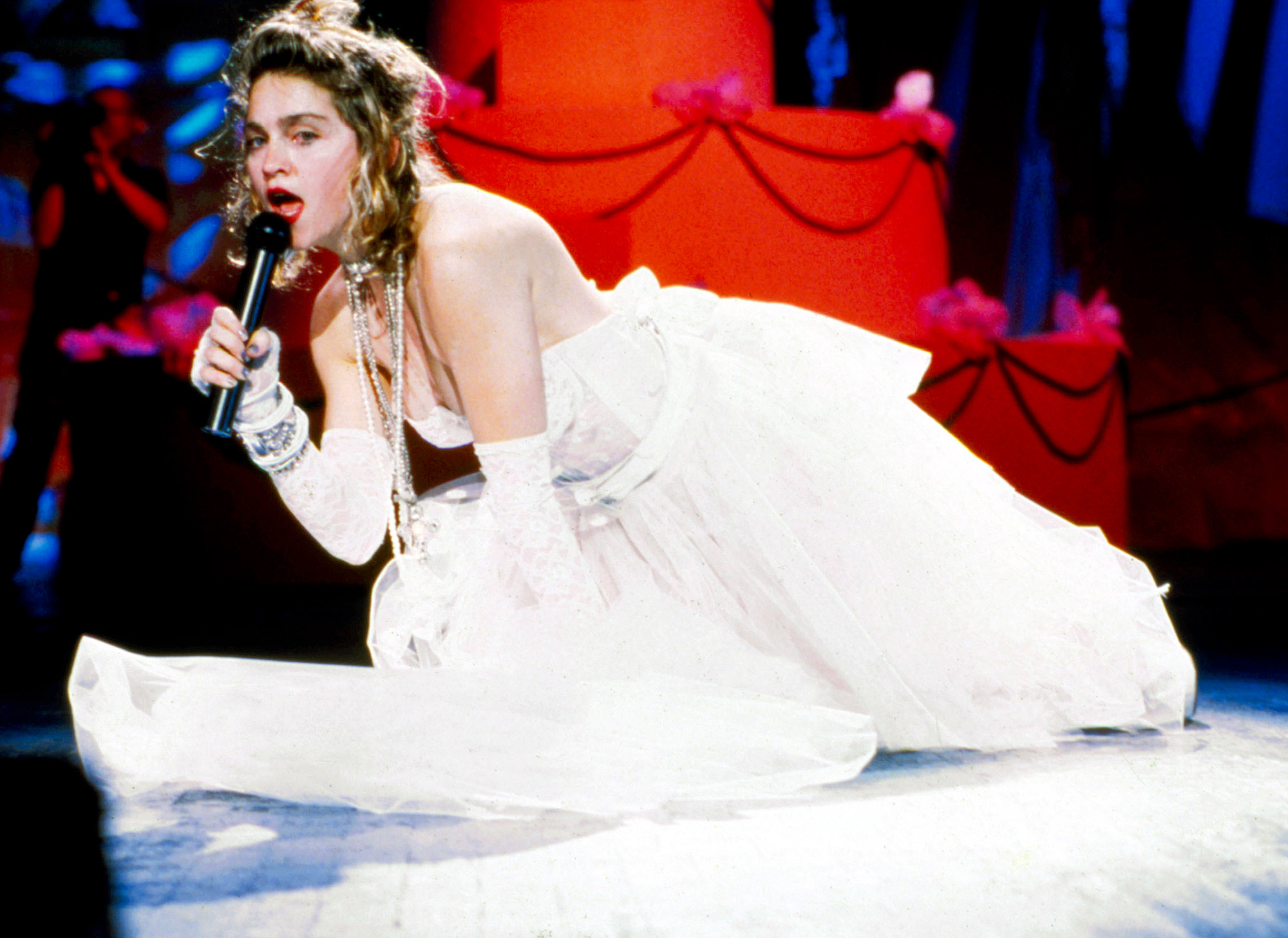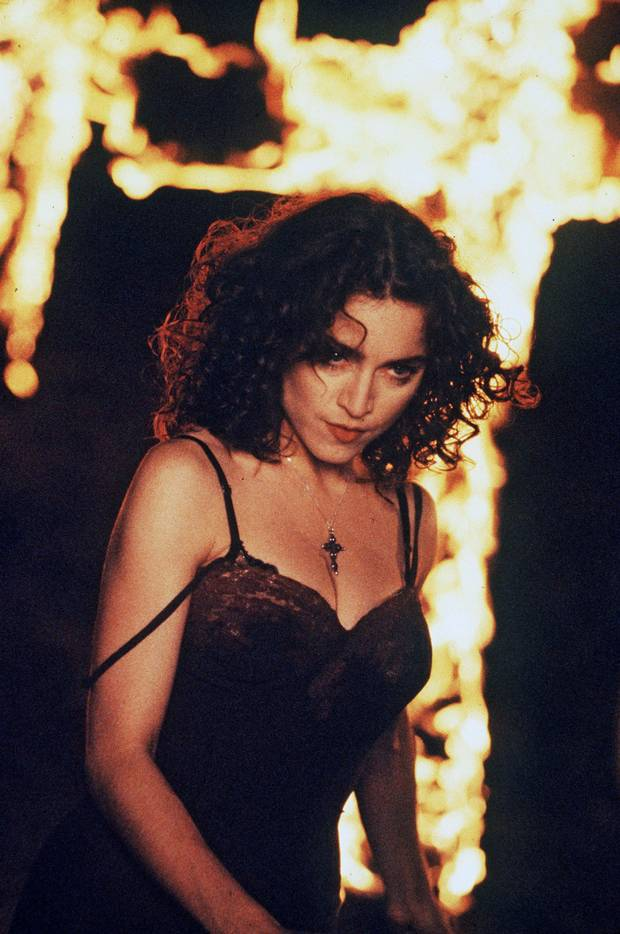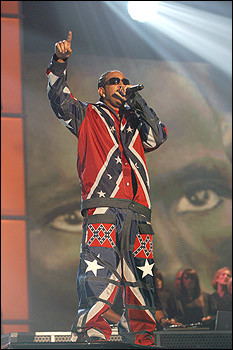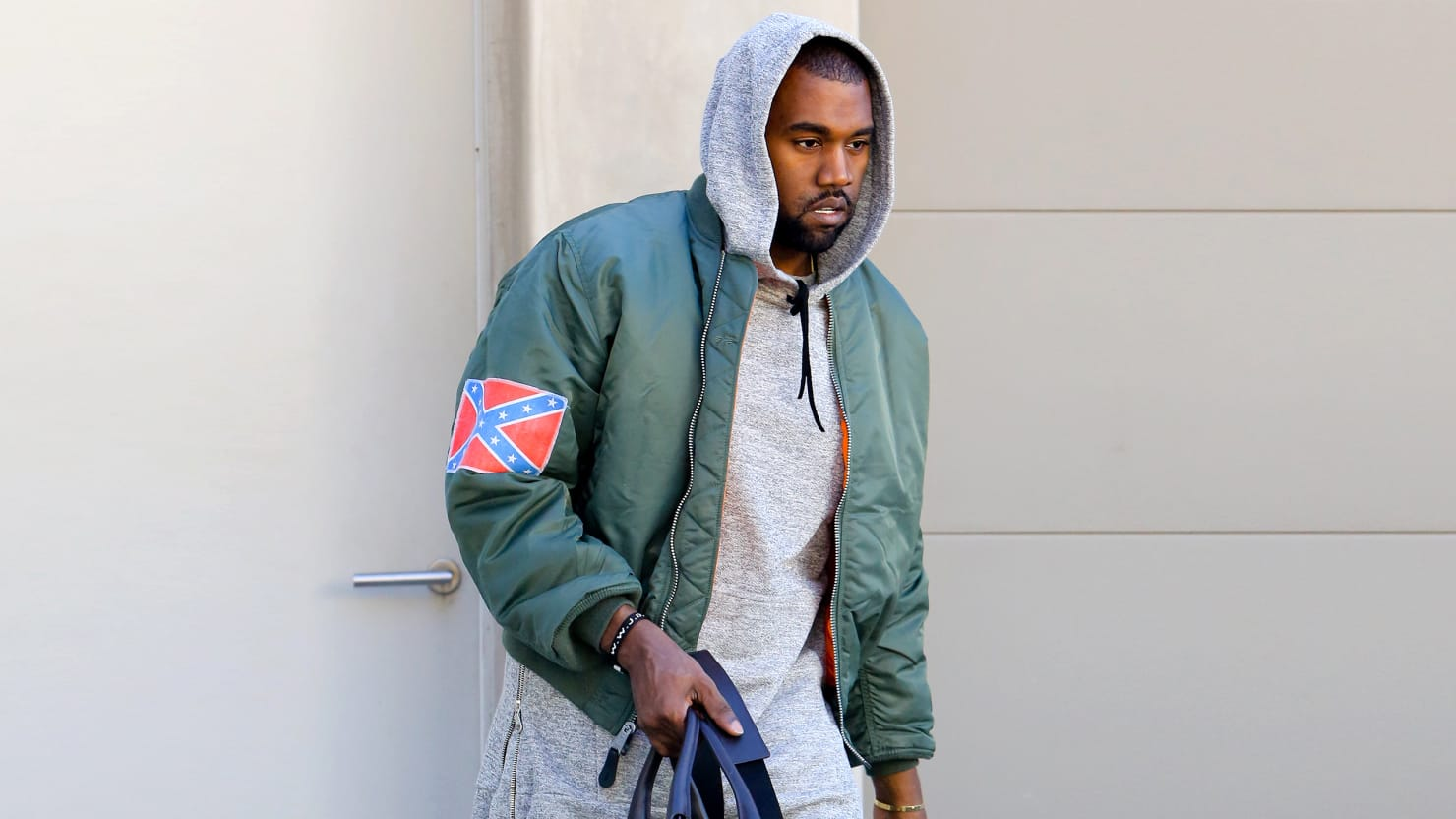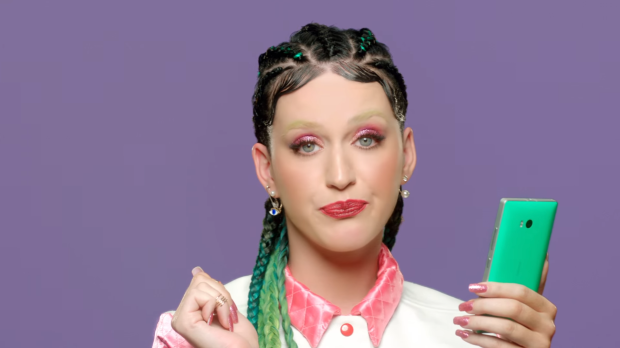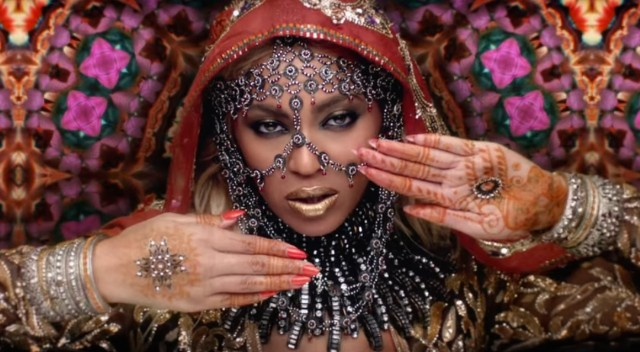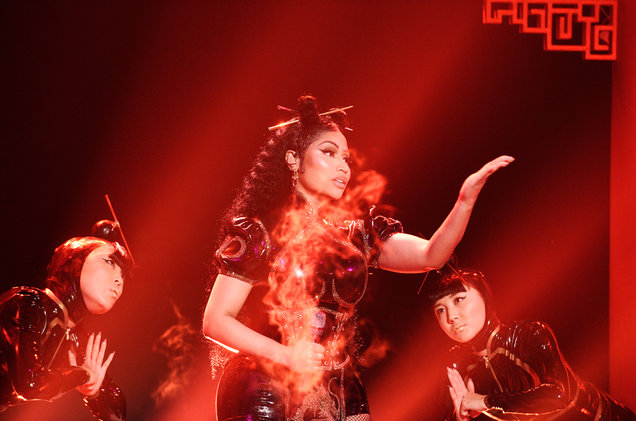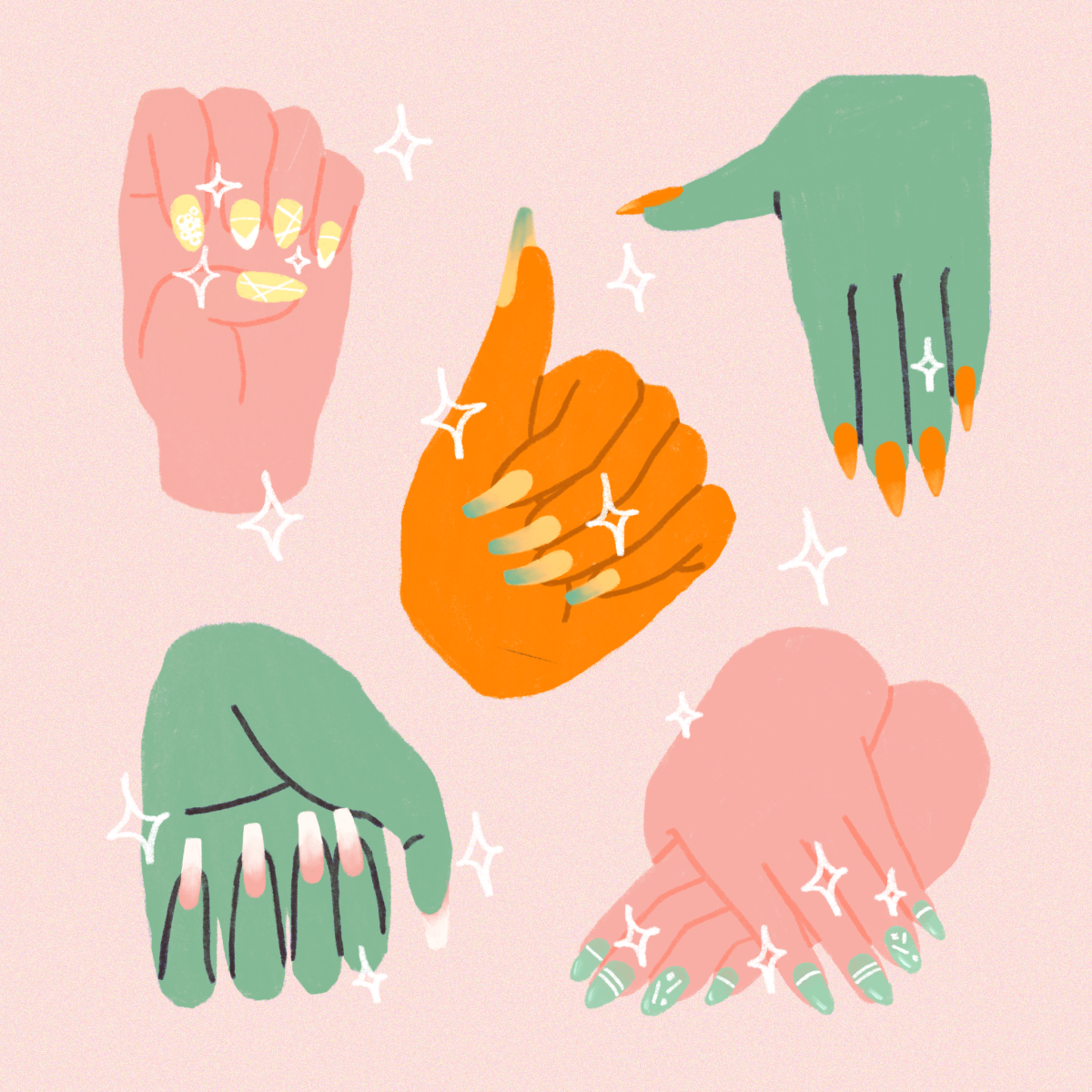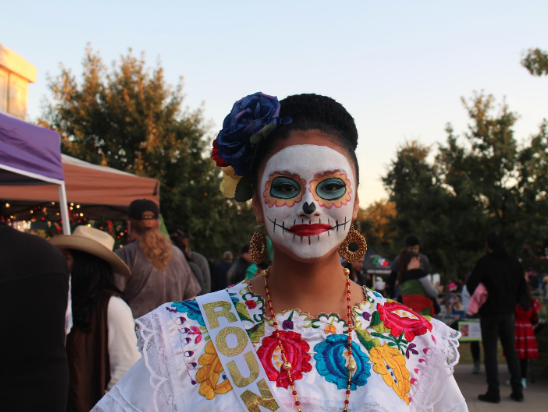Artists in the music industry have always challenged social and cultural norms. Many artists have made statements not only with their music but also with their style, stirring up controversy in the process. Take a look at moments throughout history in which the fashion of music’s biggest stars has turned heads, dropped jaws or sparked debate.
Story by Myah Taylor
The Material Girl Makes Her Debut
At the first MTV Video Music Awards in 1984, “Queen of Pop” Madonna performed her classic hit “Like a Virgin” in a revealing wedding dress. The songstress writhed and thrusted about on top of a wedding cake set. Her fusion of religious symbolism with sexuality through her song and dress choice caused quite the stir in the conservative America of the 1980s.
Photo courtesy of People Magazine
But Madonna didn’t stop there. She was full of more surprises. In the music video for her 1989 single “Like a Prayer,” she was clothed in a black dress that was reminiscent of a night gown. Her attire was often considered scandalous for the era in which this video was created, but it successfully complemented the themes of the song.
Photo courtesy of Irish Independent
Pop’s Princess Introduces a New Take On School Girl Chic
By the late ‘90s, Madonna had metaphorically passed the torch to a young Britney Spears. Spears’ debut single, “Baby One More Time” skyrocketed to number one on the charts with the aid of its video featuring her and several background dancers dressed in sexualized versions of a Catholic schoolgirl uniform.
Courtsey of Us Weekly
There was a level of skin exposure that had not been fully embraced by American culture yet. The pairing of sexuality with childhood innocence left many parents of teens upset. Like Madonna, this would not be the last time Spears drew controversy with her choice of attire.
A ‘Reclaiming’ of the Confederate Flag
At the 2005 Vibe Awards, rapper Ludacris took to the stage in a Confederate Flag get-up during his performance of the song “Georgia.” The flag is a symbol of America’s racist past and the oppression that Black Americans faced in the South. So naturally, Luda’s ‘fit caused some contention. Many thought his suit showcased an underlying ignorance, while the rapper said he chose this outfit to make a statement and represent the struggle that Black people had endured.
Other Black rappers have since sported the Confederate flag as an act of re-appropriation.
In a 2013 interview, Kanye West said, in regards to why he chose to wear the flag: “The Confederate flag represents slavery in a way. That’s my abstract take on what I know about it, right? So I wrote the song ‘New Slaves.’ So I took the Confederate flag and made it my flag. It’s my flag now. Now what are you going to do?”
Photo courtesy of The Daily Beast
An Embrace of Culture or an Insult?
The issue of cultural appropriation has been one that continues to persist. Some feel that adopting styles from a culture that is not one’s own is a way of embracing different lifestyles and aesthetics, while others feel that this behavior is disrespectful or insensitive. Cultural appropriation is no stranger to the music industry, and each time it occurs, the artist in question comes under fire.
In 2015, Justin Bieber wore dreadlocks in his hair, which is a traditionally Black hairstyle. Many thought his ‘do was cool, while others took issue with it.
Photo courtesy of Nylon
The pop star saw his hairstyle as a way to have fun. Many did not accept this statement because, for many individuals in the Black community, their dreads are not ‘just for fun;’ they’re an integral part of their culture and lifestyle.
Katy Perry, thought of as a “repeat offender” in regards to cultural appropriation, sparked similar controversy when she wore cornrows in her hair for her “This is How We Do” music video.
Photo courtesy of Essence
In Coldplay’s music video for their track “Hymn For the Weekend,” Beyonce is dressed like an Indian woman. Both she and the band came under fire for their use and “misrepresentation” of Indian culture. Some Indian people were in awe that Beyonce had embraced their culture, while others were quick to call her out. This ignited a debate about when appropriation is okay or if it’s ever okay at all.
Photo courtesy of Stereogum
More recently, rapper Nicki Minaj faced backlash for her use of Asian culture during a performance of her song “Chun Li” on Saturday Night Live this past May.
Photo courtesy of Billboard
Minaj did not understand the criticism of her Asian influenced costumes as she thought she was merely staying true to the video game character her single was named after.
Drama and spectacle has been necessary for artists from past to present to succeed in the music industry and make their voices heard. But in the process, risk taking, artistic expression, and misunderstood intentions have proven to be polarizing. One thing is for sure: these controversial fashion moments in music history have definitely gotten people talking and in some ways, this is every artist’s dream.
































